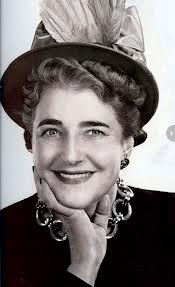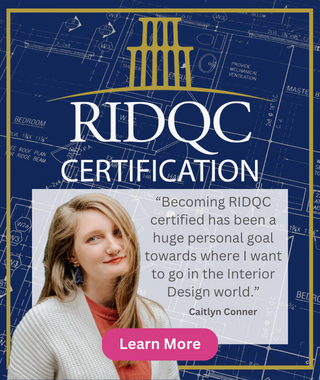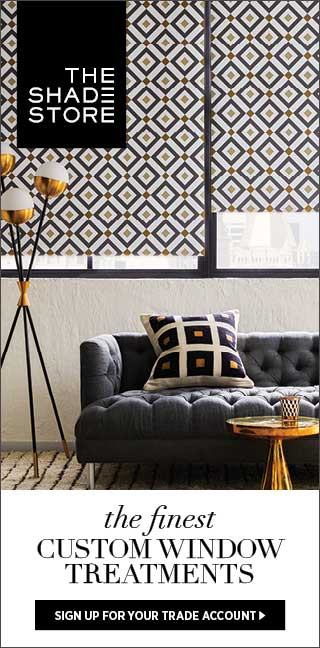Summertime
 It's that time of year when just the thought of being outside can make us melt. Lucky for us, our focus is on interior design! How did folks ever survive without air conditioning? This month we're really envious of those DSA members who live in cooler climates. Summer is a great time to regroup and prepare for a busy fall season. Take the opportunity to refocus efforts.
It's that time of year when just the thought of being outside can make us melt. Lucky for us, our focus is on interior design! How did folks ever survive without air conditioning? This month we're really envious of those DSA members who live in cooler climates. Summer is a great time to regroup and prepare for a busy fall season. Take the opportunity to refocus efforts.
Many of us find great reward in slowing our pace. While some might fear missing out on something if they stop racing against the clock, others actually experience the opposite and enjoy life even more. It's always a balancing act for those with busy careers, families and social circles. But picking a pace that allows you to get the most out of everything can be key to a happily balanced life. If you're struggling this summer to keep it all together, check out the article below on how to consciously slow your speed.
In the meantime, I hope you're taking full advantage of all that DSA membership provides. If there is anything we can do to assist you, just let us know!
Stay cool!Designer Society of America
Slow Ride, Take It Easy
"The purpose of life is to live it, to taste experience to the utmost, to reach out eagerly and without fear for newer and richer experience."
- Eleanor Roosevelt

Though we're not always willing to admit it, most of us are guilty of living life in the fast lane, intent on trying to do it all ourselves and at record speed, not slowing down long enough to realize how much of our lives might actually be passing us by unnoticed. We've been conditioned by society that, in order to succeed, we can't often afford to sit back and enjoy the small things in life. The possibility of a balanced life is out there for anyone willing to quiet the pace and actually get even more out of life at a slower speed.
It's hard for some of us to believe, but faster isn't always better and more isn't always rewarding. We can still be productive while also being freer to enjoy expending our energy on something more satisfying to the soul than merely watching our bottom line. Summer is the perfect time to engage in a slower pace of life. Finding the speed that's just right for you can be deeply satisfying.
There are many benefits of slowing down, including:
- Better focus. When you slow down, you can focus better. It's hard to focus if you're moving too fast.
- Deeper focus. Rushing produces shallowness, because you never have time to dig beneath the surface. Slow down and dive into deeper waters.
- Better appreciation. You can really appreciate what you have, what you're doing, who you're with, when you take the time to slow down and really pay attention.
- Enjoyment. When you appreciate things, you enjoy them more. Slowing down allows you to enjoy life to the fullest.
- Less stress. Rushing produces anxiety and higher stress levels. Slowing down is calmer, relaxing, peaceful.
Easier said than done, right? Slowing down doesn't happen overnight, no matter how dedicated you become to making the necessary lifestyle changes. Try these tips, one at a time, and soon you'll realize life is moving sweetly slower.
- Do less. Cut back on your projects, on your task list, on how much you try to do each day. Focus not on quantity but quality.
- Have fewer meetings. Meetings eat into your day, forcing you to squeeze the things you really need to do into small windows, and making you rush. Try to have blocks of time with no interruptions, so you don't have to rush from one meeting to another.
- Practice disconnecting. Have times when you turn off your devices and your email notifications and whatnot. Time with no phone calls, when you're just creating, or when you're just spending time with someone, or just reading a book, or just taking a walk, or just eating mindfully.
- Give yourself time to get ready and get there. If you're constantly rushing to appointments or other places you have to be, it's because you don't allot enough time in your schedule for preparing and for traveling. Pad your schedule to allow time for this stuff. If you think you can get there in 10 minutes, perhaps give yourself 2-3 times that amount so you can go at a leisurely pace and maybe even get there early.
- Practice being comfortable with sitting, doing nothing. Try just sitting there, looking around, soaking in your surroundings. Try standing in line and just watching and listening to people around you. It takes practice, but after awhile, you'll do it with a smile.
- Start to eliminate the unnecessary. When you do the important things with focus, without rush, there will be things that get pushed back, that don't get done. And you need to ask yourself: how necessary are these things? What would happen if I stopped doing them? How can I eliminate them, delegate them, automate them?
- Practice mindfulness. Simply learn to live in the present, rather than thinking so much about the future or the past. When you eat, fully appreciate your food. When you're with someone, be with them fully. When you're walking, appreciate your surroundings, no matter where you are.
Tips from focusmanifesto.com
 It's that time of year when just the thought of being outside can make us melt. Lucky for us, our focus is on interior design! How did folks ever survive without air conditioning? This month we're really envious of those DSA members who live in cooler climates. Summer is a great time to regroup and prepare for a busy fall season. Take the opportunity to refocus efforts.
It's that time of year when just the thought of being outside can make us melt. Lucky for us, our focus is on interior design! How did folks ever survive without air conditioning? This month we're really envious of those DSA members who live in cooler climates. Summer is a great time to regroup and prepare for a busy fall season. Take the opportunity to refocus efforts.
 Designer Society of American continuously serves to certify students in the field of Residential Interior Design through colleges across the nation and online. Once the students earn their certification, they're typically ready to get out of the classroom, excited, eager and anxious to start gaining true hands-on experience that no amount of studying can replace. As you continue to grow your interior design businesses and take on additional clients, please keep our well-educated students in mind for apprentice opportunities.
Designer Society of American continuously serves to certify students in the field of Residential Interior Design through colleges across the nation and online. Once the students earn their certification, they're typically ready to get out of the classroom, excited, eager and anxious to start gaining true hands-on experience that no amount of studying can replace. As you continue to grow your interior design businesses and take on additional clients, please keep our well-educated students in mind for apprentice opportunities.
 One common misconception about green design is that style must be sacrificed in the name of being truly "green." Sacrificing style is not a consideration for interior designers who wish to keep their residential clients happy. As interior designers first and foremost, you can assure your client that you have opted to expand your knowledge to cover the regulations of green design without having to compromise aesthetics. Like any design client, those desiring green elements must first decide what aspects are practical for their lifestyle. If upcycling and repurposing workable items is important to the client, you can advise them on the practicality. Likewise with the purchase of new items?unless your client commits to buying items that are classically timeless and/or of high quality, they'll more quickly end up discarded when they fail to meet the client's needs?the opposite result of LEED goals.
One common misconception about green design is that style must be sacrificed in the name of being truly "green." Sacrificing style is not a consideration for interior designers who wish to keep their residential clients happy. As interior designers first and foremost, you can assure your client that you have opted to expand your knowledge to cover the regulations of green design without having to compromise aesthetics. Like any design client, those desiring green elements must first decide what aspects are practical for their lifestyle. If upcycling and repurposing workable items is important to the client, you can advise them on the practicality. Likewise with the purchase of new items?unless your client commits to buying items that are classically timeless and/or of high quality, they'll more quickly end up discarded when they fail to meet the client's needs?the opposite result of LEED goals. "I believe in doing the thing you feel is right. If it looks right, it is right." Though Dorothy Draper had many memorable quotes, the idea that interior design should be unique to each individual space rather than follow strict design rules was an overarching theme in her design philosophy. This approach, during a time when there was little self expression in interior design, was quite fearless. It is her fearlessness during an age when women had very clear subservient roles in society that compelled me to want to find out more about the woman who created the first interior design company.
"I believe in doing the thing you feel is right. If it looks right, it is right." Though Dorothy Draper had many memorable quotes, the idea that interior design should be unique to each individual space rather than follow strict design rules was an overarching theme in her design philosophy. This approach, during a time when there was little self expression in interior design, was quite fearless. It is her fearlessness during an age when women had very clear subservient roles in society that compelled me to want to find out more about the woman who created the first interior design company.



